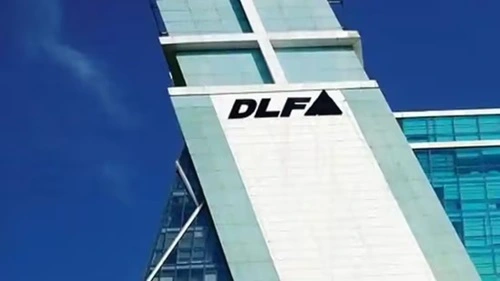DLF Limited, one of India’s largest real estate companies, was founded in 1946 by Chaudhary Raghvendra Singh and is headquartered in New Delhi. Over the years, DLF has played a significant role in shaping India’s urban landscape, developing residential, commercial, and retail properties. The company’s business model is designed to generate income from both property sales and rental income, positioning it as a leader in the real estate market.

Key Revenue Streams of DLF
DLF operates under two primary business models: the Development Business and the Annuity Business, both contributing significantly to its profits.
1. Development Business: This segment focuses on the construction and sale of residential properties, which includes luxury apartments, villas, and townships. DLF has successfully executed large-scale projects in key locations, especially in Gurgaon and other metropolitan areas. The development business is responsible for acquiring land, planning, construction, marketing, and final sales to customers.
In FY24, DLF recorded strong sales bookings, amounting to ₹14,778 crore from its residential segment. The company launched several new projects, adding around 6 million square feet of space to its portfolio. These sales help DLF maintain a steady cash flow, fueling further growth and expansion.
2. Annuity Business: DLF’s annuity or leasing business revolves around commercial properties, including office spaces and shopping malls. These properties are leased to various clients, generating regular rental income. The company has a large portfolio of commercial properties across major cities in India. In FY24, the leasing portfolio contributed substantially to its revenue, generating about ₹1,635 crore. The focus of this segment is to achieve high occupancy rates and long-term leasing contracts, ensuring stable cash inflows.
3. Retail and Office Leasing: DLF has made significant investments in building and managing commercial spaces, including premium office complexes and shopping malls. These properties are leased to corporate clients and retail brands, providing a consistent revenue stream through rents. DLF Cyber City in Gurgaon is one of the most notable projects in this segment, contributing significantly to the company’s leasing income.
4. Sale of Non-Core Assets: DLF has strategically divested from non-core assets such as hotels and wind energy projects to focus more on its core real estate business. For example, DLF sold its stakes in some hospitality ventures, such as the Aman Resorts, to streamline its operations. This move has helped the company reduce debt and reinvest the proceeds into high-return real estate projects.
Profitability and Growth
In FY24, DLF’s profit after tax (PAT) grew by 34% year-on-year, reaching ₹2,723.5 crore, compared to ₹2,034 crore in the previous fiscal year. The company’s consolidated revenue for FY24 stood at ₹6,427 crore, marking a 13% increase from ₹5,695 crore in FY23. This rise in profitability can be attributed to several factors:
- Cost Optimization: DLF has focused on reducing operating costs, including employee benefits and finance expenses. In FY24, finance costs decreased by 9%, while other operational expenses dropped by 2.3%, resulting in improved gross margins. This allowed DLF to enhance profitability despite economic headwinds.
- Strong Sales Momentum: DLF’s development business has continued to thrive, with strong demand for high-end residential properties. The company’s ability to launch and sell premium projects in prime locations has kept its sales momentum high, contributing to its top-line growth.
- Leasing Portfolio: The leasing business, which generates recurring rental income, provides DLF with a stable financial foundation. The company’s commercial properties, including office complexes and malls, remain in high demand, ensuring consistent revenue from leasing operations. The focus on achieving high occupancy rates and securing long-term leases has helped DLF stabilize its cash flows.
Challenges and Future Outlook
While DLF has reported strong financial performance, the company also faces challenges, such as rising competition from other real estate players and regulatory changes in the sector. Additionally, macroeconomic factors like inflation and interest rate hikes could impact customer affordability and demand for real estate.
Looking ahead, DLF’s growth strategy involves expanding its presence in both residential and commercial real estate markets. The company plans to launch more high-end residential projects and increase its footprint in key urban centers. Additionally, its focus on developing large-scale integrated townships and commercial hubs is expected to fuel future growth.
In conclusion, DLF earns profit primarily through property sales and rental income. Its diversified business model, encompassing residential sales and commercial leasing, ensures steady cash flow and long-term profitability. With a robust project pipeline and a strategic focus on cost management, DLF is well-positioned to continue as a leader in India’s real estate sector